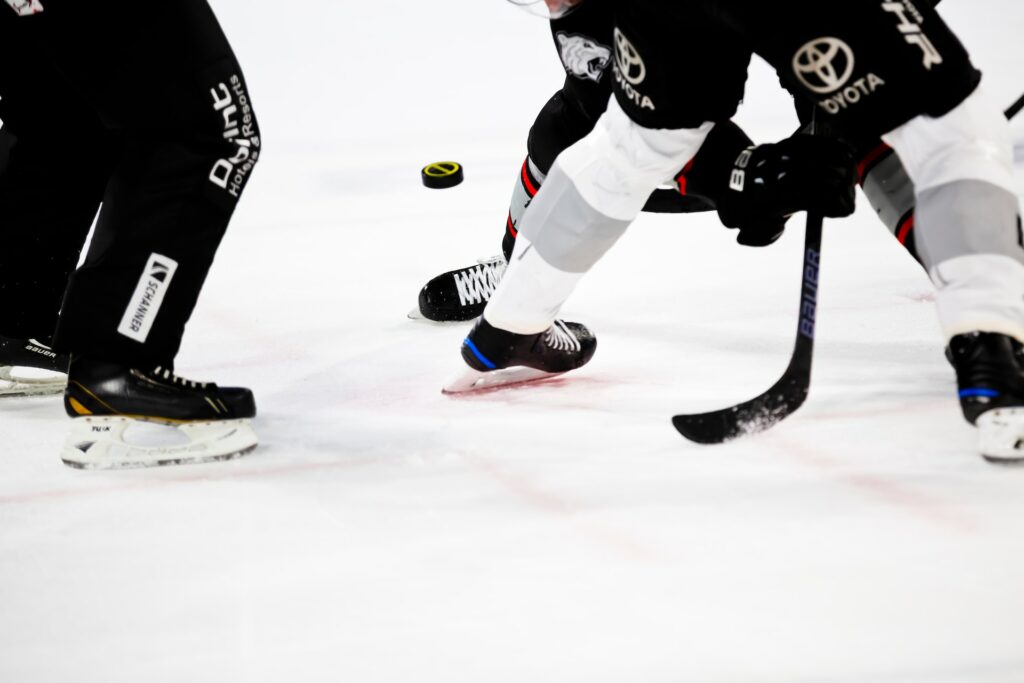Hockey, a game rife with abbreviations, can be bewildering when one attempts to unravel their meanings. Take “OTL,” for instance. What exactly does it signify within the realm of hockey?
Within the context of hockey, “OTL” stands for “overtime loss.” In cases where a game remains deadlocked at the close of the standard playtime, an additional period known as overtime ensues. The team that ultimately falls short during this extended session accrues an “overtime loss” (OTL) on its record and acquires a solitary point.
The Distinctive Nature of Overtime Losses
In the standings, you’ll notice that teams’ records are parsed into three distinct categories: wins, losses, and OTLs. But the question remains: why do we segregate overtime losses from conventional ones?
Overtime losses are categorized distinctly due to the fact that a team that succumbs during overtime still secures one point in the standings, as opposed to a standard loss, where zero points are awarded to the defeated team. This dichotomy is the reason overtime games are often referred to as “three-point games,” signifying that the winning team garners two points and the losing team obtains one point.
A Comprehensive Look at Overtime in Hockey
Overtime in the realm of hockey signifies an added interval utilized to determine a victor in cases of tied games at the close of regular play. In the regular season, this overtime duration spans five minutes, featuring a reduced roster of three players from each team engaged on the ice.
Should a stalemate persist at the culmination of these five minutes, the resolution shifts to a shootout. This shootout entails players from each team taking turns to challenge the opposing team’s goalkeeper.
Overtime during Playoff Contests
In the domain of playoff matches, overtime spans full-length periods of 20 minutes each. Unlike the regular season, there’s no shootout mechanism for deciding these games. Instead, continuous 20-minute overtime sessions are pursued until a definitive victor emerges.
The Origins of the Overtime Loss
For those who’ve observed hockey, it’s evident that a substantial number of games conclude with a tie at the end of standard play. Remarkably, during the 2020-21 NHL season, out of the total 896 games played, 196 of them remained level at the conclusion of regulation, prompting their resolution in overtime.
In light of the unpopularity of tied outcomes, the NHL addressed this concern back in the early days of 1983. The league introduced an additional time segment, labeled overtime, to resolve games that persisted in a draw after regulation. However, it wasn’t until the 1999-2000 season that the NHL integrated the concept of “loser points” for the team defeated during overtime, thus giving rise to the “OTL” column in the standings.
Decoding “SOL”
In instances where no decisive winner emerges during overtime, the game shifts to a shootout. If a team comes up short in the shootout, it’s designated as having a “SOL,” which stands for “shootout loss.” This echoes the principles of an overtime loss, with the defeated team still securing a singular point.

To wrap up
Hockey’s intricate tapestry includes a plethora of cryptic abbreviations, underscoring the multifaceted nature of the sport. Among these, “OTL” stands as a testament to the dynamic nature of the game and its outcomes. Overtime losses, distinct from conventional losses, bestow a point upon the team that faces defeat, a testament to their perseverance.
- The realm of hockey extends beyond its abbreviations, offering an engaging narrative of overtime’s role in determining a victor in tied matches. Whether in regular season contests or intense playoff battles, the game adapts to ensure a definitive result. The historical underpinnings of overtime losses shed light on the evolution of the sport and its commitment to resolving games conclusively;
- Furthermore, the concept of “SOL” demonstrates the balance between competition and fairness. In the realm of shootouts, even the team that falls short is recognized, emphasizing the sport’s commitment to recognizing effort and participation.
In this intricate world of hockey, where points are earned, moments are savored, and victories are celebrated, the language of abbreviations intertwines with the essence of competition. Overtime and its associated terms serve as a testament to the sport’s evolution, its commitment to fairness, and the unyielding pursuit of a decisive outcome on the ice.
